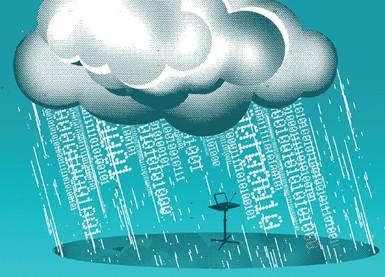According to statistics, the average utilization rate of data centers in the data center is only 20% to 30%, and the server is idle in four-fifths of the cases. However, in the case of more traditional servers, even in idle state, Power consumption also has a peak of 60%, the power consumption of idle devices, and the energy consumption of data center cooling equipment, the data center will increase energy consumption by 50% to 100%. How to solve such a phenomenon, carry out server virtualization transformation, and transform the servers in the data center from the original various specifications into a relatively unified single mode (that is, customize different types of servers according to the requirements of the data center), which can effectively reduce the energy of the data center. Consumption, improve utilization. At this point, the success of Google's data center has become a good case. At the same time, users of each data center also need to perform role conversion, which will transform the role of the builder and user of the data center into the role of the user of the data center. I believe that readers who understand cloud computing understand that cloud computing is actually a service model that provides users with the use of servers. In other words, it may be a larger SaaS, but the software is not used here, but the data center. . In this way, data center repetitive construction can be effectively avoided, and data center managers can carry out services such as cloud computing and cloud storage in depth according to the category of the data center, just like Amazon. In the Chinese market, the construction of data centers is the government, the financial industry, and the communications industry. These industries control a large amount of funds. Therefore, there are transitions and redundant construction in the construction of data centers. When we ask: China Mobile is willing to connect with China Unicom. Together with China Telecom, do you build a data center on a regional basis? I believe that they are not willing, security issues, different types of services, different internal operating systems, etc., restricting the pace of building a unified data center. This is also reflected in the repeated construction of China's mobile communication base stations, often in the same place, there are mobile GSM base stations, and there are Unicom GSM base stations on the side. In the construction of a unified data center, IBM and Wuxi Municipal Government together built the first cloud computing data center in Wuxi Software Park. Enterprises in the industrial park do not need to set up a data center to directly rent resources of the cloud computing data center. Significantly reduce the expenditure on building data centers. Multi-level hybrid data center design David J. Cappuccio, vice president and chief researcher at Gartner, said: "A single design approach raises the cost of building and operating data centers, and the multi-level design approach effectively controls investment costs because of the most rational and practical facility size. Operating expenses." An industry-standard Classifica TIon System defines a data center facility as an I-IV level. Level IV requirements meet the highest availability requirements. Multi-level hybrid design first evaluates and optimizes related applications through business needs analysis, while exploring where redundant technologies and infrastructure are needed to support mission-critical applications. Applications with similar requirements are grouped into the corresponding data center hierarchy, that is, the same area (or the same level) where the corresponding redundancy and scalability are configured. The multi-level hybrid design is a service provided by HP EYPMCF and is part of HP's Critical Facilities Services (CriTIcalFaciliTIesServices). For multi-level hybrid design services, Rick Einkorn, director of business strategy and development for HP EYPMCF's Critical Facilities Services, said multi-level hybrid design first evaluates and optimizes applications through business needs analysis, while exploring where redundant technologies and infrastructure are needed to support Key business applications. Applications with similar requirements are grouped into the corresponding data center hierarchy, that is, the same area (or the same level) where the corresponding redundancy and scalability are configured. Building a combination of Tier II and Tier IV infrastructure can save companies millions of dollars compared to all Tier IV infrastructure. The HP Multi-Level Hybrid Design Cost Analysis Tool (CostAnalysisTool) can reflect the impact of different design adjustments on investment costs. For example, a 50,000-square-foot data center with a multi-level hybrid design can save nearly 24% in construction costs compared to a simple IV-layer design standard. In addition, the multi-level partition design reduces the energy and space requirements of the data center and significantly reduces operating costs. It can be said that in the future, the data center will move toward a more green, cloud computing and multi-level direction, and each enterprise will have to shoulder more social responsibility and transform its role from the owner of the data center. The perspective of the data is transformed into users of the data center, and the data center builders (including IT vendors and service providers) need to establish a complete service mechanism. It is believed that data centers are moving toward fewer, larger, and lower energy consumption. Array Speakers,Waterproof Loudspeaker,Line Array Speaker,Linear Array Loudspeaker NINGBO SANCO ELECTRONICS CO., LTD. , https://www.sancobuzzer.com